From an agency advertiser’s perspective, our job is fun and exciting but also challenging and laborious in the same breath.
Each scoped campaign, across a myriad of industries and objectives, can present the daunting task of developing the best digital media to approach the right audience and satisfy the client’s needs.
While projects should never be scoped in a templated one-size-fits-all manner, to save you time and worry, your process should.
Understanding The Ask
When confronted with a client’s need, it is essential to understand where we need to be by the end to understand where we can start.
There are often multiple objectives – for example, to build awareness but also generate leads.
This is not achieved in one fell swoop; effectively, one leads to another.
Ask the client, “What would be considered a success in the end?”
I know that we have all seen so many different marketing funnel variations over the years, but simplified, it should be a part of your initial consideration set.
Understanding Objectives
Awareness
I like to say that often you won’t be paid today for the work you did today – but someday you will.
This is the appropriate mindset to convey to your team and clients.
The work you do here will pay dividends and result in non-paid benefits in the future, unlike paid lead generation campaigns, where the leads stop when the spend stops.
Tactics to achieve this objective include:
- Out of home (billboard/kiosk).
- Radio, cable TV (broadcast).
- Paid social media (broad/interest-based).
- Display advertising (programmatic/Google Ads Network).
Consideration
The middle ground, or what I call the “considerate audience,” typically knows who you are.
Your job is to help them on their journey to understand that you are a likely candidate for their conversion – that is to say, they should buy from you.
Tactics to achieve this objective include:
Action
Being present for those who are potentially looking for you is key to closing the loop on a customer journey.
Tactics to achieve this objective include:
- Paid search (PPC).
- SEO.
Understanding The Journey
Audiences vary so much between industries, products, and service types.
Where one audience may typically have a very short journey, your efforts can be better focused on the action phase with SEO or PPC.
Essentially, be there when they are looking for a first-touch conversion.
Awareness should be a critical component for a long-journey audience such as car buyers, where there are nearly two dozen touchpoints.
Understand that most of the people who will see your ad will not be a customer this week, month, or maybe even year. Your job is to create familiarity for when their journey will start.
Driving brand awareness early can shore up your total amount of touchpoints needed to convert.
If you don’t necessarily know your audience well – or their journey – do your homework.
There is a wealth of resources out there that can help you better understand audiences, current trends, and behaviors – such as the Consumer Insights section of Think With Google.
Also, it doesn’t hurt to talk to the internal client sales team. They know common behaviors, ideal search terms, and where prospects typically interact with the brand along a journey.
Scoping Opportunity
By this point in the process, you should understand the ask, the potential customer, and the weighted level of need from across the funnel.
This now will allow you to understand what you should likely estimate within budget.
Media Analysis Tip
While scoping for PPC, SEO, and paid social can typically be a self-serve process, media planning can often take many resources to assist.
It is also best to be prepped with knowledge of campaign length or flighting needs. Understanding geographic needs will also better help to prepare your vendor rep in providing spend insight.
Getting a feel for cost will help you understand where you can advertise. Will your play be print, out-of-home, streaming TV, or all of the above?
For DMA-level advertising, you can use tools such as SQAD to give you population insights for various age groups by gender. It also allows for you to estimate TV and radio costs across desired geographic areas.
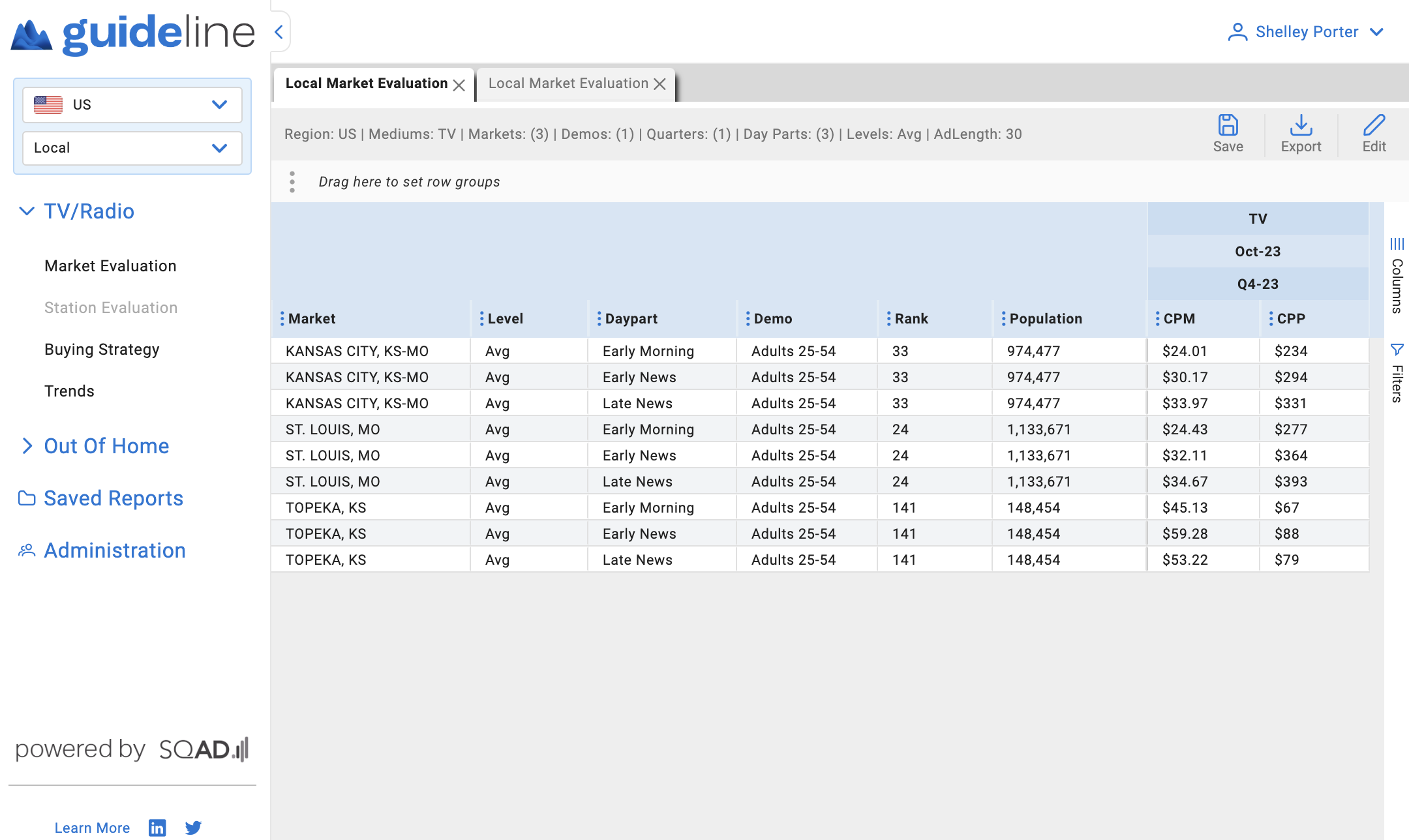 Screenshot from SQAD, November 2023
Screenshot from SQAD, November 2023Social Analysis Tip
We haven’t been given the go-ahead yet to build out social media ads, but that doesn’t mean that we cannot create a prospecting campaign to gain a sense of how large our audience is and what amount of coverage we can gain from this area.
This is available on most of the top social media platforms such as Meta, X, LinkedIn Ads, Snapchat, and more.
Simply begin creating a campaign.
From the earlier “ask” process point, you have a general sense of whether paid social is meant for awareness or for driving traffic.
In this Facebook Ads example, you can see that by inputting your geographic needs, demographics, interests, etc., will give you a general sense of your audience size, estimated reach, or clicks.
Digest these numbers and then divide the impressions by the reach figure to gain a sense of frequency. Are you present at least once a week in front of your audience?
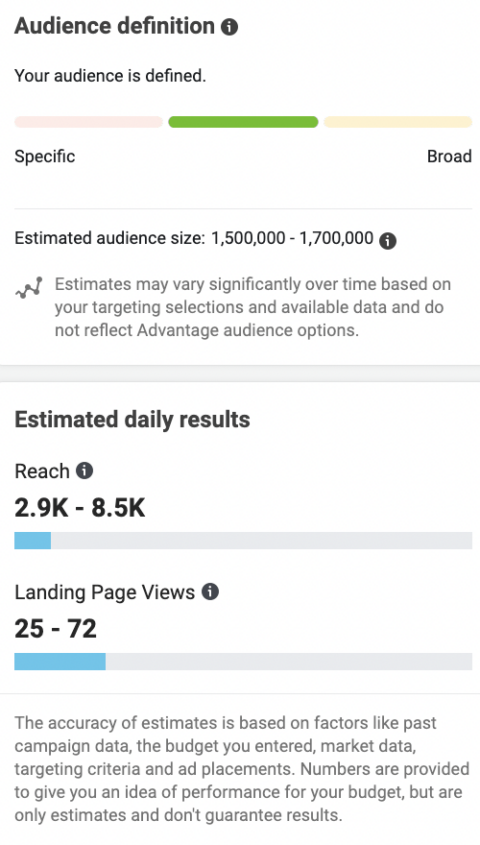 Image from Facebook Ads, November 2023
Image from Facebook Ads, November 2023PPC Analysis Tip
We don’t want to get into a full-scale analysis of PPC competitors; that should come at the stage when you receive approval on your full digital company.
For now, try leveraging a tool like Semrush; ask for direct competitors and review them in a competitive tool like SpyFu. Here, you can gain a sense of their paid keyword coverage.
You can see how many keywords you may need to target and how much you might need to spend.
Additionally, review the competitors and, in total, all of the keywords that are targeted and how closely these relate to your target audience.
No digital analysis tool is perfect, but a service like this is great for estimated spend vs. pulling a number out of the air.
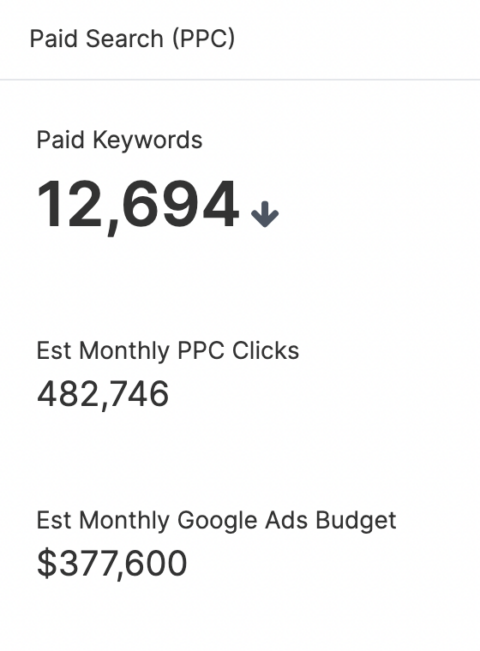 Screenshot from SpyFu, November 2023
Screenshot from SpyFu, November 2023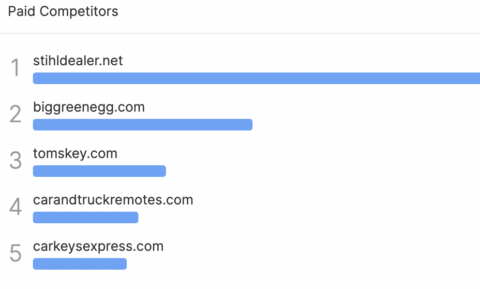 Screenshot from SpyFu, November 2023
Screenshot from SpyFu, November 2023SEO Analysis Tip
Run your domain through a ranking assessment tool, such as the Performance-Search Console section of Google Search Console, to understand initially how much of your overall keyword presence relates to the client or management ask at hand.
If your niche visibility is severely waning, a cursory glance at the types of content ranking in Organic Search will allow you to understand the ideal amount of content ideation, creation, and promotion that will be needed to suffice.
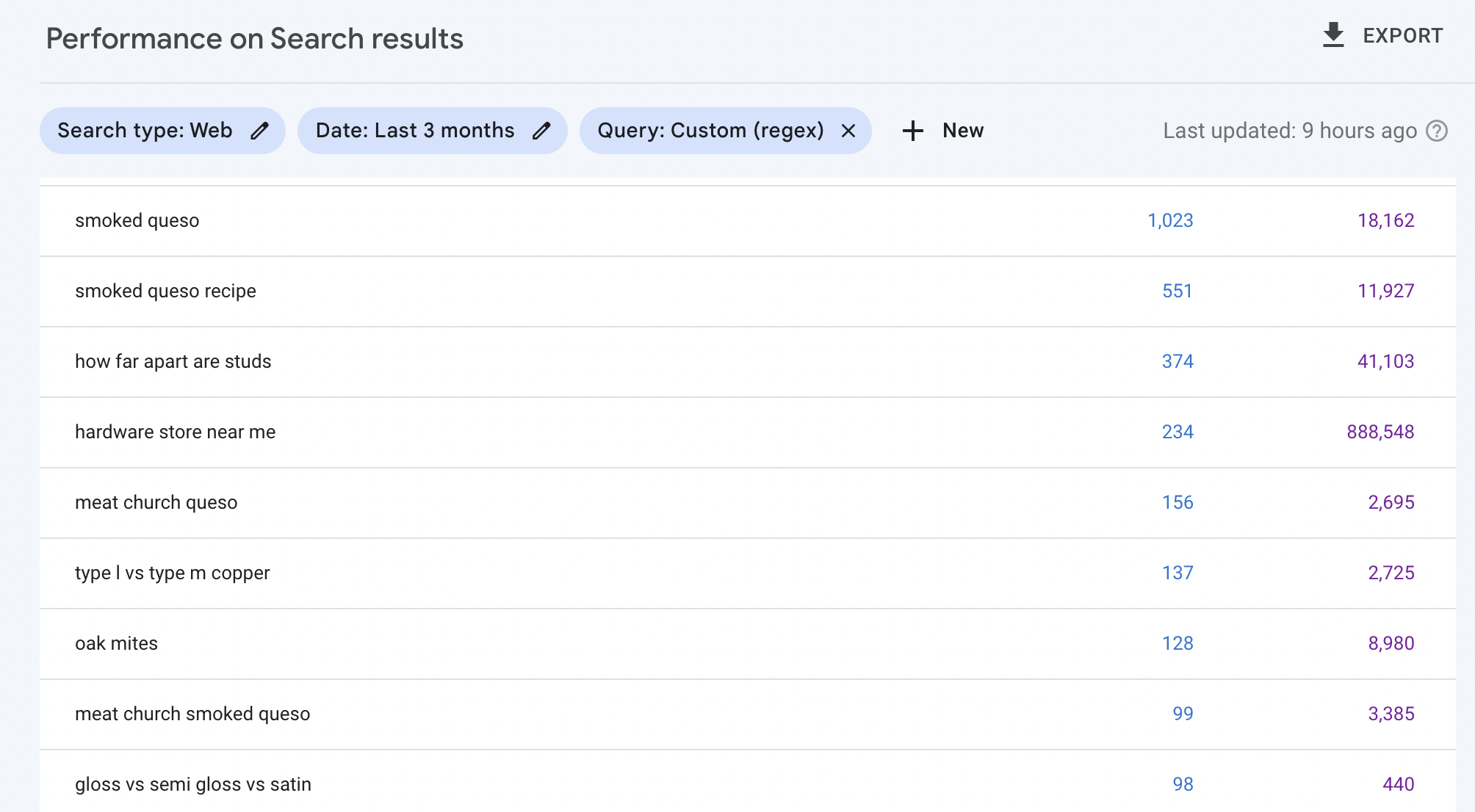 Screenshot from Google Search Console, November 2023
Screenshot from Google Search Console, November 2023Time Is Something That We All Need More Of
There is no real turnkey solution to the scoping needs of our clients, but it never hurts to craft a process that will save time and resources to give you the best foot forward in your upcoming campaign.
Being able to confront your client objectives with peace of mind in knowing the ask while also understanding your audience coverage is a great feeling!
More resources:
- Paid, Owned & Earned Media: What Is The Difference?
- Paid Social Media: A Guide To Social Advertising Success
- A Guide To Essential Tools For SEO Agencies
Featured Image: Roman Samborskyi/Shutterstock





